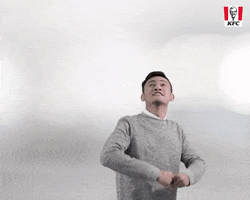Peptidoglycan or murein is a unique large macromolecule, a polysaccharide, consisting of sugars and amino acids that forms a mesh-like peptidoglycan layer outside the plasma membrane
Not to be confused with glycopeptide, proteoglycan, or glycoprotein Peptidoglycan or murein is a unique large macromolecule, a polysaccharide, consisting of sugars and amino acids that forms a mesh-like peptidoglycan layer outside the plasm
Erich Traub (1906 – 1985) German veterinarian, scientist and virologist who specialized in foot-and-mouth disease, Rinderpest and Newcastle disease
Erich Traub worked directly for Heinrich Himmler, head of the Schutzstaffel (SS), as the lab chief of the Nazis’ leading bio-weapons facility on Riems Island. Note: Riems is home to the oldest virological research institution in the world, now called the Friedrich Loeffler
Indoleamine-pyrrole 2,3-dioxygenase (IDO or INDO) is involved in tryptophan metabolism
Indoleamine-pyrrole 2,3-dioxygenase (IDO or INDO EC 1.13.11.52) is a heme-containing enzyme physiologically expressed in a number of tissues and cells, such as the small intestine, lungs, female genital tract or placenta. In humans is
Sterol carrier proteins (aka nonspecific lipid transfer proteins)
These proteins are different from plant nonspecific lipid transfer proteins but structurally similar to small proteins of unknown function from Thermus thermophilus. This domain is involved in binding sterols. The human sterol carrier protein 2 (SCP2) is a basic protein that is believed to part
Glucuronic acid is a uronic acid that was first isolated from urine
Glucuronic acid (from Greek γλεῦκος “wine, must” and οὖρον “urine“) is a uronic acid that was first isolated from urine (hence the name”uronic acid”). It is found in many gums such as gum arabic
List of human clusters of differentiation (OR CD) MOLECULES
* = group; ** = not listed on hcdm CD1* MHC-like molecule that presents lipid molecules CD1a CD1a (Cluster of Differentiation 1a), or T-cell surface glycoprotein CD1a, is a human protein encoded by the CD1A gene. An antigen-presenting protein that binds self a
A tetrapeptide is a peptide, classified as an oligopeptide, since it only consists of four amino acids
Examples of tetrapeptides are: See also Hormones Categories: From Wikipedia where this page was last updated July 2, 2022
What Are Plant Matrix Metalloproteinases?
Plant matrix metalloproteinases are metalloproteins and zinc enzymes found in plants. Matrix Metalloproteinase Matrix metalloproteinases (MMPs) are zinc endopeptidases, commonly called metzincins. MMP enzymes represent an ancient family of proteins with major similarities in genetic make-up
What Is Nitrophenol? (besides something mentioned in ‘Scientific Opinion on the re‐evaluation of aspartame as a food additive’)
Nitrophenols are compounds of the formula HOC6H5−x(NO2)x. The conjugate bases are called nitrophenolates. Nitrophenols are more acidic than phenol itself. Wikipedia Mono-nitrophenols with the formula HOC6H4NO2. Three isomeric nitrophenols exist: o-Nitrophenol (2-
4-Nitrophenol mentioned in ‘Scientific Opinion on the re‐evaluation of aspartame (E 951) as a food additive’ (2013)
3.2.6.2. Studies on the effect of aspartame administration on xenobiotic metabolising enzymesAn early study (E15, 1972) indicated that the oral administration of aspartame to male Charles River rats (2000-4000 mg/kg) for four days had no acute effect on hepatic cytochrome P450 (CYP)-mediated xenobio
Green synthesis of gold nanoparticles using aspartame and their catalytic activity for p-nitrophenol reduction
Wu S, Yan S, Qi W, Huang R, Cui J, Su R, He Z. Green synthesis of gold nanoparticles using aspartame and their catalytic activity for p-nitrophenol reduction. Nanoscale Res Lett. 2015 May 8;10:213. doi: 10.1186/s11671-015-0910-7. PMID: 25991916; PMCID: PMC4431991. Abstract We demonstrated a facile a
Experimental (induced) phenylketonuria in infant monkeys – A high phenylalanine diet produces abnormalities simulating those of the hereditary disease (1965)
Experimental phenylketonuria can be produced in infant monkeys by feeding excessive quantities of L-phenylalanine soon after birth. Both the phenylketonuric monkey and the phenylketonuric human patient have elevated plasma levels of phenylalanine, and monkey and human excrete almost the same phenyla
Harlow Article Search at NIH
Results are displayed in a computed author sort order. Results by year timeline is unavailable EXPERIMENTAL PHENYLKETONURIA IN INFANT MONKEYS.WAISMAN HA, HARLOW HF.Science. 1965 Feb 12;147(3659):685-95. doi: 10.1126/science.147.3659.685.PMID: 142420162CiteShare The development of inf
Waisman Article Search at NIH
Results are displayed in a computed author sort order. Results by year timeline is unavailable EXPERIMENTAL PHENYLKETONURIA IN INFANT MONKEYS. WAISMAN HA, HARLOW HF.Science. 1965 Feb 12;147(3659):685-95. doi: 10.1126/science.147.3659.685.PMID: 142420162CiteShare Phenylketonuria in rats: r











